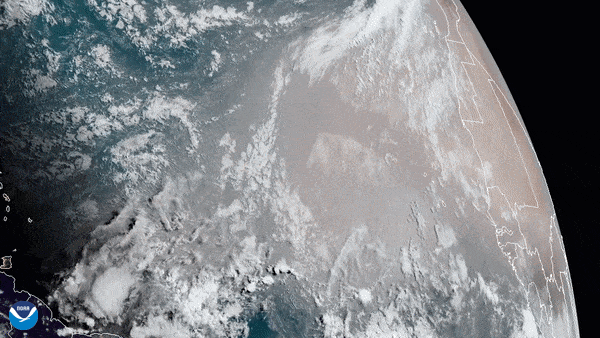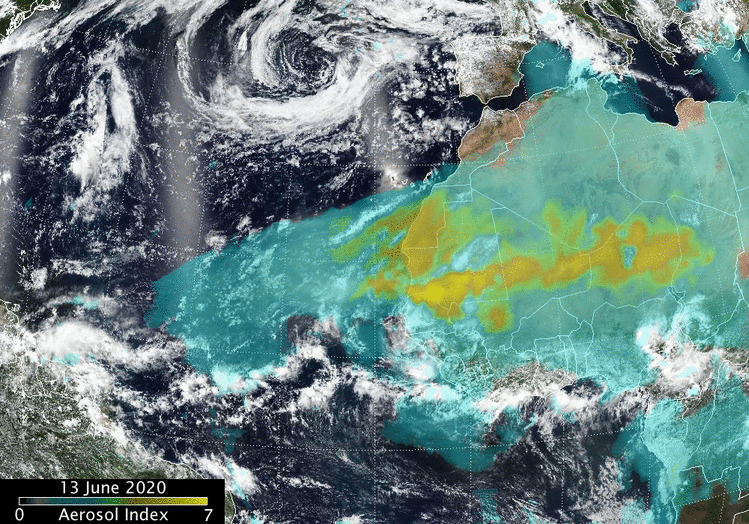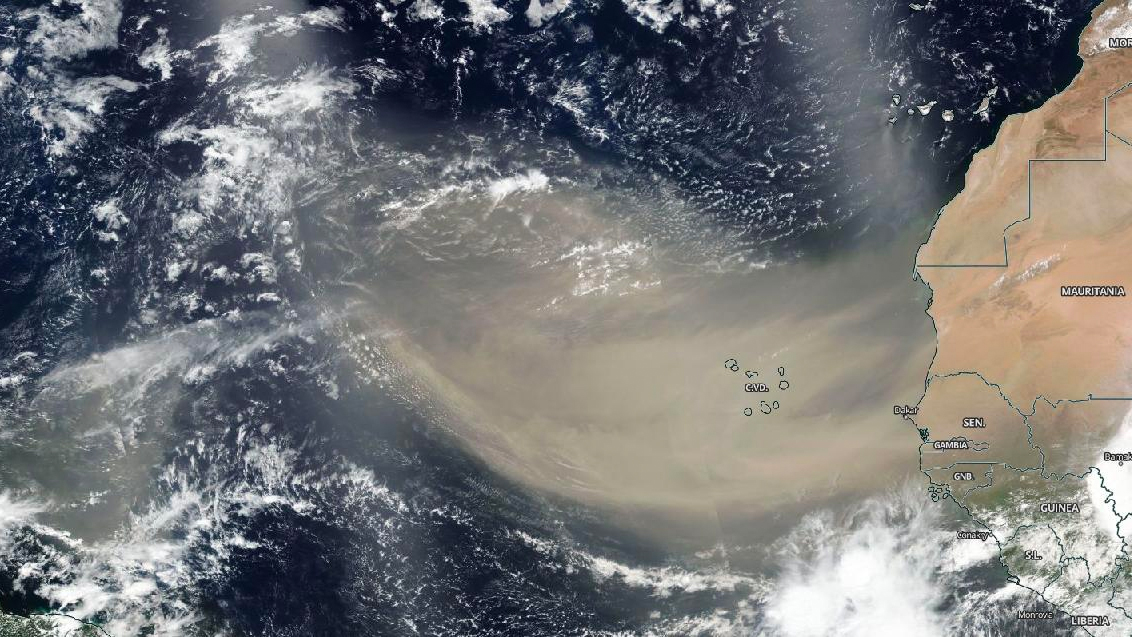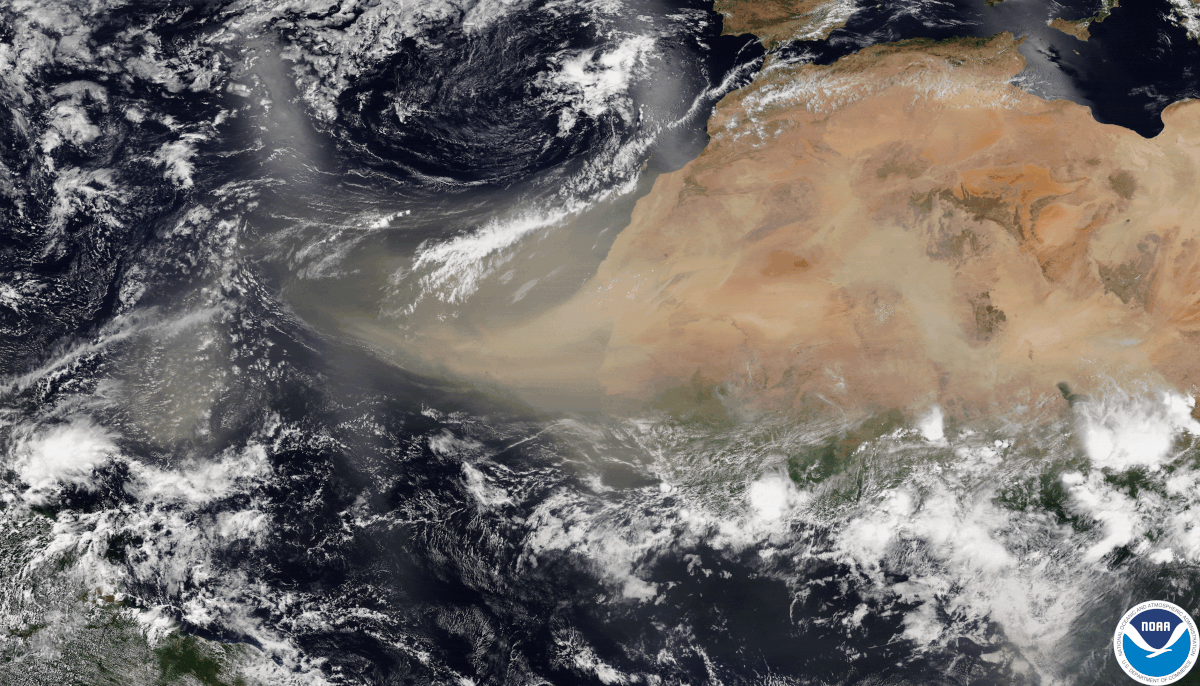The world's biggest dust bunny is crossing the Atlantic Ocean right now

A "Godzilla dust cloud" from the Sahara Desert that's heading toward the United States this week is the largest and most concentrated dust cloud of its kind in the past 50 years, according to news sources.
As of June 22, the dust cloud — which some experts have dubbed the "Godzilla dust cloud" — had reached the Caribbean, spiking air quality to "hazardous" levels, according to the AP. People along the Gulf Coast may be next to experience the dusty visitor.
Trade winds regularly carry dust clouds from the Sahara on a 5,000-mile (8,000 kilometers) journey across the Atlantic Ocean, but this particular formation "is an abnormally large dust cloud," Dan Kottlowski, AccuWeather senior meteorologist and lead hurricane forecaster, told the weather website.
Related: Fishy rain to fire whirlwinds: The world's weirdest weather
"One of the things I noticed from this is the dust started coming off the coast of Africa several days ago, in fact maybe over a week ago," Kottlowski told AccuWeather. "And it's still coming. It's almost like a prolonged area of dust."
The huge Saharan dust cloud formed June 13, when strong atmospheric updrafts over the Sahara were picked up by easterly winds, which blew the dust cloud west over the Atlantic, according to NASA.
Data collected by instruments aboard NASA's Suomi National Polar-orbiting Partnership (NPP) satellite show the dust cloud's enormity. Colin Seftor, an atmospheric scientist at NASA's Goddard Space Flight Center in Greenbelt, Maryland, used that data to create an animation of the plume.
Sign up for the Live Science daily newsletter now
Get the world’s most fascinating discoveries delivered straight to your inbox.

"This is the most significant event in the past 50 years," Pablo Méndez-Lázaro, an environmental health specialist at the University of Puerto Rico, told the AP. "Conditions are dangerous in many Caribbean islands," including in Antigua and Trinidad & Tobago, he said.
Dust from the Sahara plays an important role on the other side of the Atlantic Ocean; it builds beaches in the Caribbean and fertilizes soil in the Amazon rainforest during June, July and sometimes early August, according to NASA. The current cloud, however, is also affecting air quality, prompting health officials to tell people to stay indoors and use air filters, the AP reported.
Saharan dust can also suppress tropical storms. "It keeps a lid on the atmosphere and brings dry air into anything that may try to develop, which is very detrimental for tropical development which relies on warm, moist air," Alan Reppert, a senior meteorologist at AccuWeather told the site.



Even so, this cloud likely won't affect the Atlantic hurricane season, which often peaks in August, September and October.
"Dust tends to be much less of a problem during the heart of the hurricane season," Kottlowski told Acuweather.
To see a 10-day computer model forecast (as of June 22) of the dust cloud, check out this graphic tweeted by the National Weather Service.
An updated (Monday June 22nd) computer model forecast of atmospheric dust for the next 10 days. pic.twitter.com/1nTg8vd9M7June 22, 2020
The huge dust cloud will likely reach the Texas coast on Thursday (June 24) and cover the entire Gulf Coast by this weekend, Kottlowski said. The poor air quality this Saharan dust will bring could exacerbate the COVID-19 situation, according to an April study from the Netherlands. The study, published by the World Bank, suggests that areas with increased atmospheric particulate matter (that is, air pollution) have a higher incidence of the COVID-19 respiratory disease.
"The estimates suggest that expected COVID-19 cases increase by nearly 100% when pollution concentrations increase by 20%," the researchers wrote in the study.
- Images: Amazing shots of storms light up weather photo contest
- 2 stunning photos catch monster thunderstorm's approach
- Photo: Massive ice balls along Lake Michigan
Originally published on Live Science.
OFFER: Save 45% on 'All About Space' 'How it Works' and 'All About History'!
For a limited time, you can take out a digital subscription to any of our best-selling science magazines for just $2.38 per month, or 45% off the standard price for the first three months.

Laura is the archaeology and Life's Little Mysteries editor at Live Science. She also reports on general science, including paleontology. Her work has appeared in The New York Times, Scholastic, Popular Science and Spectrum, a site on autism research. She has won multiple awards from the Society of Professional Journalists and the Washington Newspaper Publishers Association for her reporting at a weekly newspaper near Seattle. Laura holds a bachelor's degree in English literature and psychology from Washington University in St. Louis and a master's degree in science writing from NYU.










